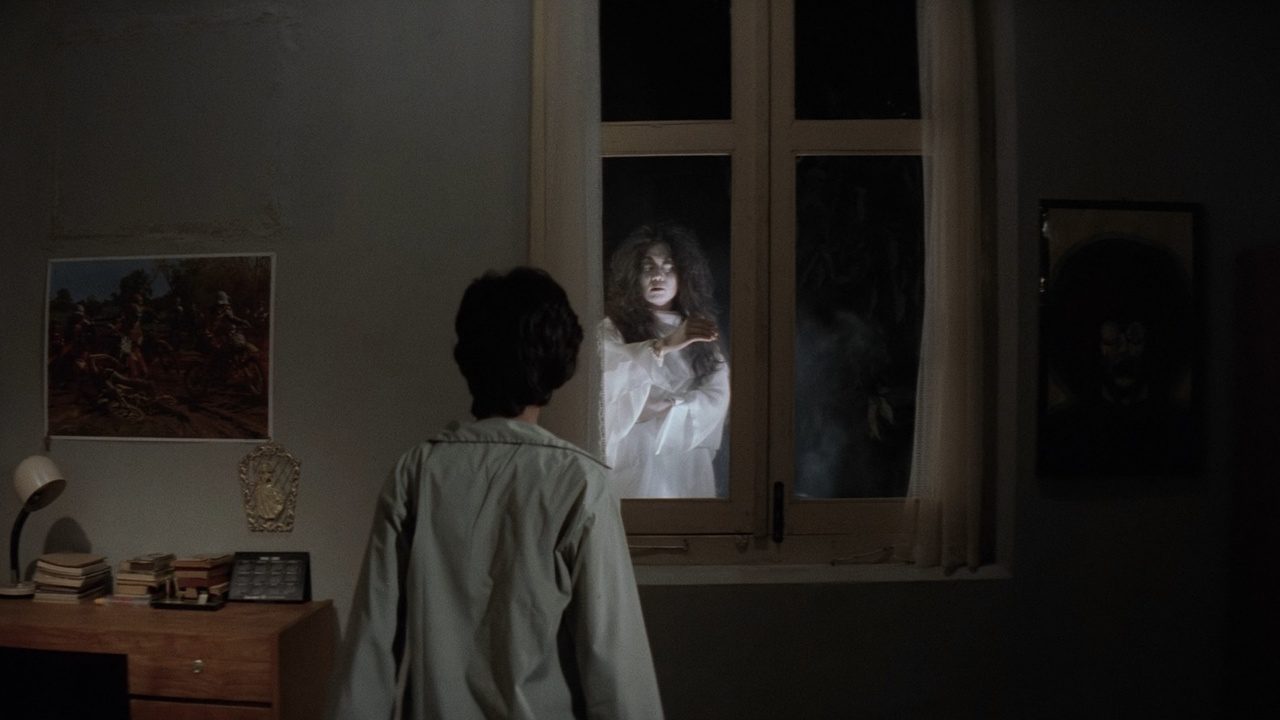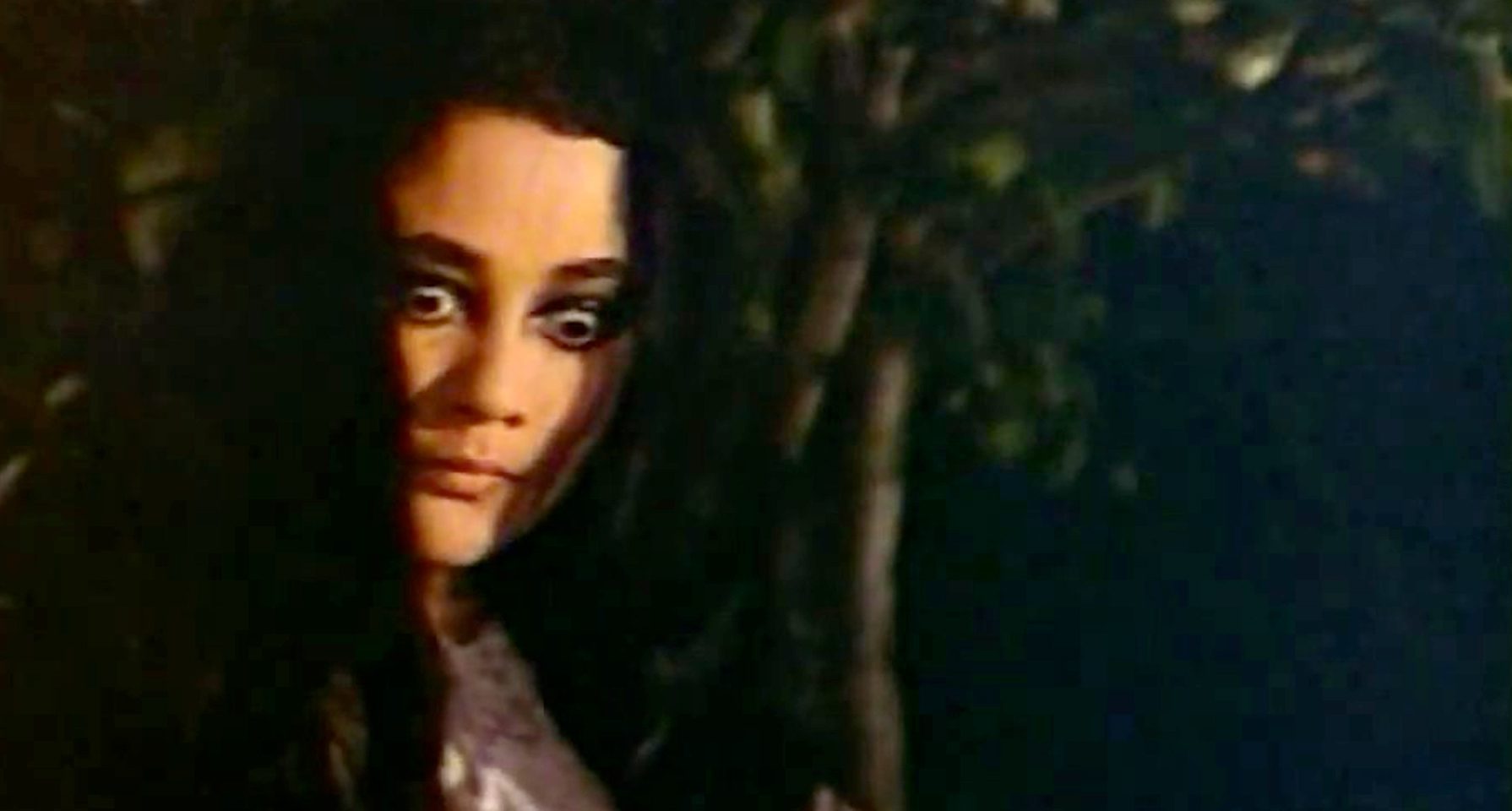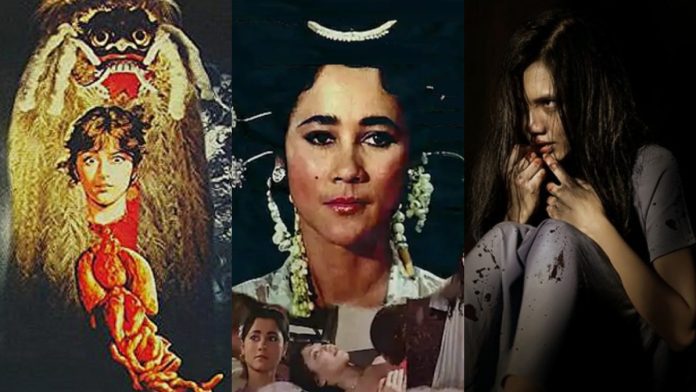Indonesian cinema has a long history of producing horror films that push boundaries. Often blending folklore, religion, sexuality, and political commentary, these films don’t just aim to frighten viewers, they provoke deep cultural debates. Because of this, several Indonesian horror films have been banned at different points in time, either for being too explicit, too politically sensitive.
In this article, we’ll explore 7 Indonesian banned horror films, uncovering why they were considered controversial, what themes they explored, and how their legacies continue to linger despite censorship.
7 Banned Indonesian Horror Films
Pengabdi Setan (Satan’s Slave, 1980)

Directed by Sisworo Gautama Putra, this cult classic is one of Indonesia’s most famous horror films. It tells the story of a family haunted by the ghost of their deceased mother, who lures them into demonic worship.
The film was banned in certain regions for its depictions of Islamic rituals mixed with occult practices, which were seen as blasphemous at the time. Despite censorship, the film became a massive underground hit and is still considered a milestone in Indonesian horror. Its influence was so strong that it inspired Joko Anwar’s critically acclaimed 2017 remake.
Mistik (Mystics in Bali, 1981)

This legendary exploitation horror film follows a young woman who becomes involved in black magic rituals in Bali, eventually transforming into a terrifying creature known as a leak.
The movie gained international cult status but was banned locally due to its graphic violence, nudity, and portrayal of Balinese mysticism as demonic. Indonesian authorities deemed it disrespectful to cultural traditions. However, foreign audiences embraced it as one of Southeast Asia’s wildest horror exports, and today it’s often screened at genre film festivals worldwide.
Lara Jonggrang (Princess Lara Jonggrang, 1983)

Based on the Javanese legend of Lara Jonggrang, this film blends romance, mythology, and horror. It depicts the cursed princess transforming into a vengeful spirit after betrayal.
Censors banned it for excessive supernatural elements tied to sacred folklore, which authorities worried might mislead audiences about Javanese cultural heritage. Yet, its haunting visual style and dramatic retelling kept it alive in cultural memory, resurfacing later as a classic example of myth-inspired horror.
Sundel Bolong (1981)

This horror film stars Suzanna, Indonesia’s undisputed “Queen of Horror,” as a beautiful woman who dies tragically and returns as a vengeful ghost with a horrifying hole in her back.
The movie was controversial because of its graphic sexual assault scenes and supernatural revenge narrative, which authorities claimed were too explicit for public audiences. Despite censorship, Sundel Bolong became so iconic that the ghost itself became a permanent figure in Indonesian urban legend, mentioned in countless later films and pop culture references.
Malam Satu Suro (First Night of Suro, 1988)

Another Suzanna-starring horror, Malam Satu Suro revolves around a woman who rises from the grave to haunt those who wronged her. The title refers to an important Javanese mystical night associated with rituals and spirits.
The film was banned temporarily for linking entertainment with sacred cultural practices, which authorities feared would be seen as mocking tradition. Nevertheless, it later achieved cult status, with Suzanna’s eerie performance cementing her role as Indonesia’s most iconic horror actress.
Bangkitnya Mayit (The Resurrection, 1989)

This film combined political allegory with horror, telling the story of corpses resurrecting after being wronged in life. On the surface, it was a simple ghost tale, but many interpreted it as a critique of government corruption and abuse of power during the Suharto regime.
Unsurprisingly, the censors banned it swiftly, fearing subversive messaging. Although little-known outside Indonesia, it’s remembered as a rare example of political horror during a time when speaking out against authority could be dangerous.
Hantu Jeruk Purut (The Ghost of Jeruk Purut, 2006)
Unlike earlier classics, this 2006 horror film was banned not for nudity or politics but for causing mass hysteria. The movie depicted the ghost of a decapitated pastor haunting Jakarta’s Jeruk Purut cemetery, a place already infamous for real ghost stories.
After the film’s release, crowds of young people began flocking to the cemetery at night, trying to summon the ghost. Authorities banned screenings in some areas, fearing the chaos was getting out of hand. Even so, the legend of Hantu Jeruk Purut remains popular, with new adaptations and spin-offs keeping the ghost story alive.
The Legacy of Banned Horror Films
Ironically, many of these banned films became cult classics precisely because of censorship. The bans created an aura of mystery around them, driving audiences to seek out bootleg copies or international festival screenings.
Today, these films are celebrated not only for their entertainment value but also for their role in challenging authority, pushing creative boundaries, and reflecting societal anxieties. The modern revival of Indonesian horror, with global hits like Impetigore (2019) and Joko Anwar’s Satan’s Slaves remake, owes much to the legacy of these once-forbidden films.
Final Thoughts
The history of banned Indonesian horror films shows how cinema can both frighten and provoke, questioning cultural norms, politics, and religion. While authorities tried to silence these stories, their influence has endured, shaping the identity of Indonesian horror worldwide.
Whether it’s the haunting imagery of Sundel Bolong, the wild magic of Mystics in Bali, or the political undertones of Bangkitnya Mayit, these films remind us that horror is never just about fear—it’s about confronting the truths society often wants to bury.
Have other suggestions? Write them down on the comment section below!
Must read: Unpopular Steamy Kdramas: 6 Hidden Gems You Need to Watch


